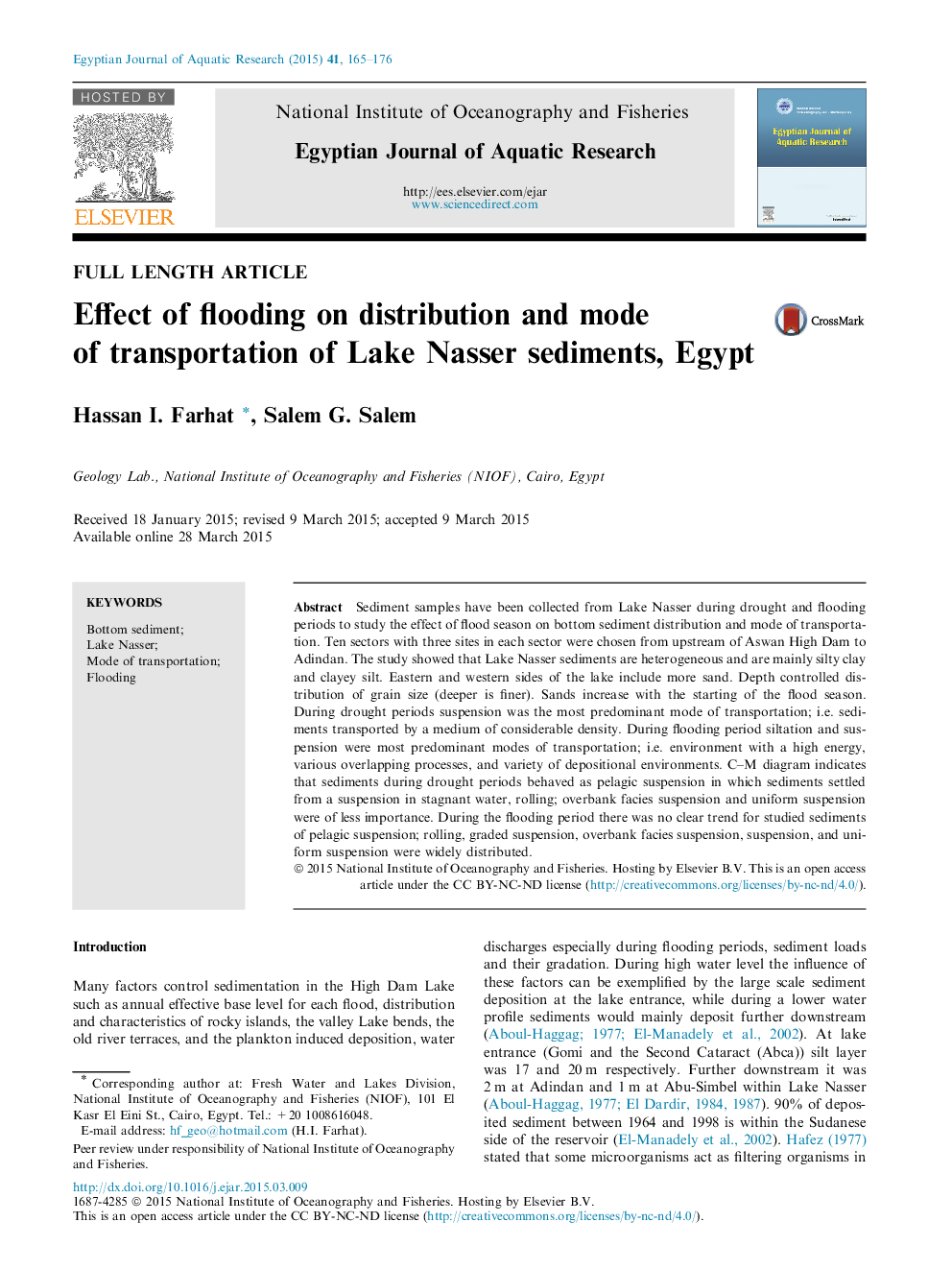| Article ID | Journal | Published Year | Pages | File Type |
|---|---|---|---|---|
| 4493077 | The Egyptian Journal of Aquatic Research | 2015 | 12 Pages |
Sediment samples have been collected from Lake Nasser during drought and flooding periods to study the effect of flood season on bottom sediment distribution and mode of transportation. Ten sectors with three sites in each sector were chosen from upstream of Aswan High Dam to Adindan. The study showed that Lake Nasser sediments are heterogeneous and are mainly silty clay and clayey silt. Eastern and western sides of the lake include more sand. Depth controlled distribution of grain size (deeper is finer). Sands increase with the starting of the flood season. During drought periods suspension was the most predominant mode of transportation; i.e. sediments transported by a medium of considerable density. During flooding period siltation and suspension were most predominant modes of transportation; i.e. environment with a high energy, various overlapping processes, and variety of depositional environments. C–M diagram indicates that sediments during drought periods behaved as pelagic suspension in which sediments settled from a suspension in stagnant water, rolling; overbank facies suspension and uniform suspension were of less importance. During the flooding period there was no clear trend for studied sediments of pelagic suspension; rolling, graded suspension, overbank facies suspension, suspension, and uniform suspension were widely distributed.
